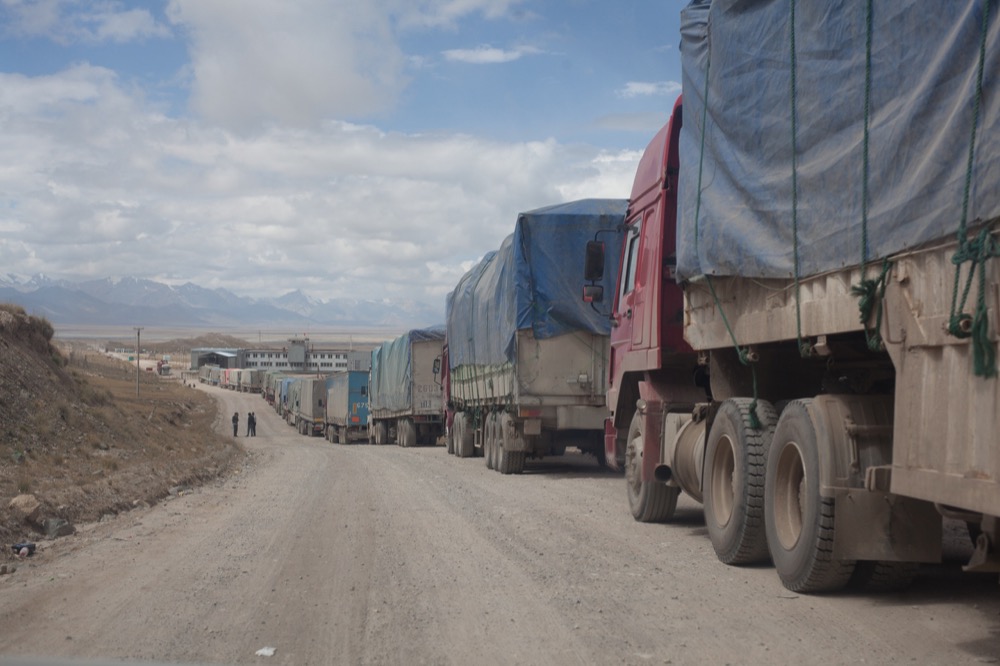Synopsis
What does China’s rise mean for its immediate neighbours? How do China’s rapid economic growth, its strategic decisions to foster trade, secure access to natural resources, and its efforts to prevent unrest affect the lives and futures of the people living along its borders? These questions present the key theme that this book aims to explore. The art of neighbouring thereby denotes both an every-day skill and an analytical lens to understand the ever-changing conditions along the frontiers.
For those who survived ten long years of hostility and war along the Red River in northern Vietnam, neighbouring China means forgetting the past and moving together towards the promise of prosperity. For those living along the Amur in Siberia and watching the lights of bustling Chinese cities across the river, it triggers dreams but also a reflex of self-protection and nationalism. For those dwelling in the Himalayan valleys of Nepal, it rekindles old ties with Tibet, where the roads are close, beer is cheap, and high profits can be made. And for traders moving between Xinjiang and Central Asia, it presents new mobilities but also being targeted by evolving regimes of regulation and control. As rising China (the nation, the notion, the buzzword) channels aspirations, triggers fears, and creates opportunities, the art of neighbouring becomes a crucial skill that includes negotiating, making use of, and sometimes evading the bordering situation.
Much of the current discussion on China’s rise and its growing influence concerns geopolitical and macro-economic issues; it focusses on state-centred policies and the various nuances of official rhetoric. What is often missing in the discussion are the borderlands themselves, their inhabitants, their linkages with each other, and their role as pathways rather than peripheries. Borderlands are the junctures through which the globalised economy’s flows of raw materials, natural resources, commodities and people are channelled.
While approaching the art of neighbouring from a contemporary perspective, we are keenly aware of its historical roots. The contemporary experience of neighbouring China stems from a common trait in the histories of most of these borderlands. Under imperial rule (on both sides), borderlands were seen as unruly frontiers inhabited by rebellious ethnic groups to be pacified and civilised. Despite the fact that trans-regional trade and exchange were salient features of most of these frontier communities for centuries, they were usually portrayed as local, anachronistic tribes rather than as cosmopolitan actors and mediators between empires. In the 1950s and 1960s, the newly founded People’s Republic demarcated its boundaries as a sovereign nation-state. The fuzziness of erstwhile frontier zones was replaced by the sharp contours of the new nation’s “geo-body”. Conflicts with India, Russia, and Vietnam marked the beginning of a phase of closure. Many long-established cross-border relations were curbed, outlawed, and in some places completely banished. From the 1980s onwards, the political sensitivities of border zones, while still lingering, were gradually superimposed by expectations of prosperity stimulated by the momentum of “opening up” and economic reforms. A tentative normalisation of diplomatic relations ensued. This process led to the establishment of various special cross-border economic corridors, multilateral associations, the reconciliation with Vietnam, the resolution of border disputes in Central Asia and Siberia, and the cautious reopening of a road linking India and China. Borderland communities who had grown accustomed to orient themselves away from China (to Moscow, Delhi, Kathmandu, Bangkok, and so on) during the restricted decades started looking fervently yet warily towards China again. As ancient cross-roads re-emerge as zones of contact and translation, they also become targets of new regulatory regimes aimed at “managing” the flows of people and goods across borders.
On the one hand, neighbouring denotes skilled efforts to negotiate one’s own position in relation to others – other ethnicities, other religions, other species, other environments, other political regimes, and other social categorizations. In this sense, neighbouring is a techne that builds on practical, situational knowledge and, at times, requires improvisation and cunning strategies. On the other hand, visions of developmental modernism, religious morality, conservation or trade laws, civilising missions and neoliberal agendas embroil the the art of neighbouring in epistemic conflicts and global ethico-politics. This book develops the notion of neighbouring as a conceptual lens that bundles both these aspects into a novel perspective: The borderlands discussed here are taken as a single geographical configuration linked by their spatial and historical positionality vis-a-vis China. Rather than peripheries, they appear as pathways – pathways for the natural resources that drive the world’s economic powerhouse; pathways for Chinese goods and development ideals; and pathways for ambitious traders, pilgrims, and refugees.

Table of Contents
Introduction: Neighbouring in the Borderworlds Along China's Frontiers, by Juan Zhang and Martin Saxer
Chapter 1: Bright Lights Across the River: Competing Modernities at China’s Edge, by Franck Billé
Chapter 2: Realms of Free Trade, Enclaves of Order: Chinese-Built “Instant Cities” in Northern Laos, by Pál Nyíri
Chapter 3: New Roads, Old Trades: Neighboring China in North-Western Nepal, by Martin Saxer
Chapter 4: Trading on Change: Bazaars and Social Transformation in the Borderlands of Kazakhstan, Kyrgyzstan and Xinjiang, by Henryk Alff
Chapter 5: A World Community of Neighbors in the Making: Resource Cosmopolitics and Mongolia’s “Third Neighbor” Diplomacy, by Uradyn E. Bulag
Chapter 6: The Mobile and the Material in the Himalayan Borderlands, by Tina Harris
Chapter 7: Odd Neighbors: Trans-Himalayan Tibetan Itineraries and Chinese Economic Development, by Chris Vasantkumar
Chapter 8: “China Is Paradise”: Fortune and Refuge, Brokers and Partners, or the Migration Trajectories of Burmese Muslims toward the Yunnan Borderlands, by Renaud Egreteau
Chapter 9: Neighboring in Anxiety along the China-Vietnam Border, by Juan Zhang
Chapter 10: China’s Animal Neighbors, by Magnus Fiskesjö
Reviews
Sturgeon, Janet C. 2018. “The Art of Neighbouring: Making Relations across China’s Borders, edited by Martin Saxer and Juan Zhang, Amsterdam: Amsterdam University Press”. The China Quarterly 234(June):573–575
Yeophantong, Pichamon. 2018. “Book Review: Martin Saxer and Juan Zhang, Eds., The Art of Neighbouring: Making Relations Across China’s Borders. Amsterdam: Amsterdam University Press, 2017.” Journal of Chinese Overseas 14:309–11.


